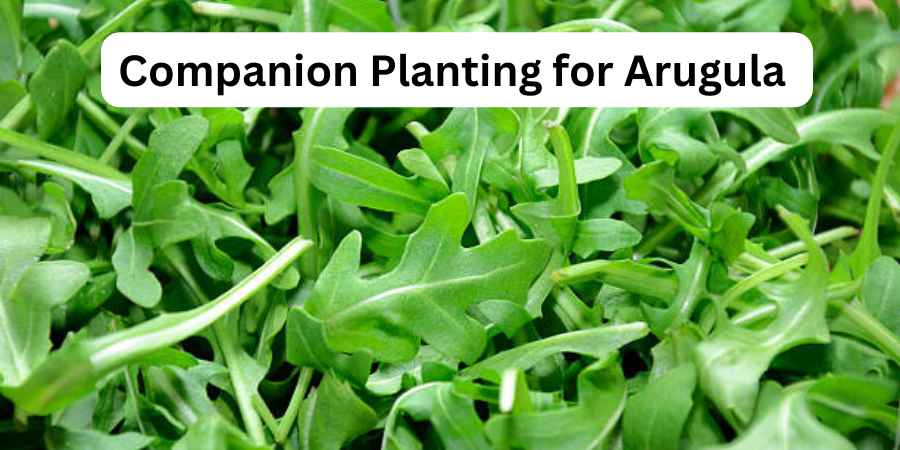Last Updated on July 8, 2025 by Jocelyn
Have you ever tasted a salad with a peppery kick? That bold flavor often comes from arugula, a quick-growing leafy green that’s as nutritious as it is delicious.
Known scientifically as Eruca sativa, arugula is more than just a salad staple. It’s full of fiber, rich in vitamins and minerals, and supports heart health, digestion, and healthy skin.
It’s also easy to grow and thrives alongside certain plants. Good companions help arugula grow faster, taste better, and stay protected from pests.
If you want lush harvests and bold flavor in every bite, learning which plants grow well with arugula is a smart place to begin.
Table of Contents
ToggleWhat Are the Benefits of Companion Planting With Arugula
Companion planting with arugula can bring numerous benefits to your garden. By strategically planting arugula with other crops, you can enhance your garden’s health, productivity, and resilience.
Below is a table summarizing the key benefits of companion planting with arugula.
| Benefit | Description |
| Pest Control | Arugula helps deter garden pests like flea beetles by emitting natural chemicals that repel them, reducing the need for chemical pesticides. |
| Improved Growth and Vigor | Companion plants can enhance the growth and vigor of arugula, and sometimes even improve its flavor. |
| Attracting Pollinators and Beneficial Insects | Arugula attracts pollinators and beneficial insects such as ladybugs, hoverflies, and predatory wasps that prey on pests. |
| Soil Health | Improves soil health through nitrogen fixation and nutrient cycling, reducing soil erosion and suppressing weeds. |
| Optimal Growing Conditions | Provides shade or ground cover, creating optimal growing conditions for arugula and its companions. |
| Efficient Resource Use | Reduces competition for resources like water, sunlight, and nutrients by utilizing plants with complementary growth patterns and root structures. |
| Biodiversity and Resilience | Increases biodiversity, enhancing the ecosystem’s resilience to pests, diseases, and environmental stresses. |
| Maximizing Space | Allows gardeners to maximize limited space by intercropping plants with different growth habits and maturity rates, promoting efficient land use. |
Discover more about companion planting in my guides:
- Companion planting with kohlrabi
- Banana companion plants
- Companion plants for raspberries
- Sage companion plants
Best Arugula Companion Plants
Some plants pair well with arugula and bring many positive effects. They can repel pests that might damage the arugula. They can also help by adding more nutrition to the soil, which significantly benefits the growth of arugula.
These companion plants can create a healthy environment for your arugula crop.
1. Carrots
Carrots are excellent companion plants for arugula. They are great at providing shade with their leafy greens, which helps prevent bolting. Gardeners love how they occupy different growing zones, so they can be planted together easily.
The fronds of carrots are similar to bush beans and help extend the harvest season during hot weather. Carrots thrive in well-drained, loose soil that is enriched with organic matter.
They need adequate moisture and sunlight to support robust root growth and vibrant foliage.
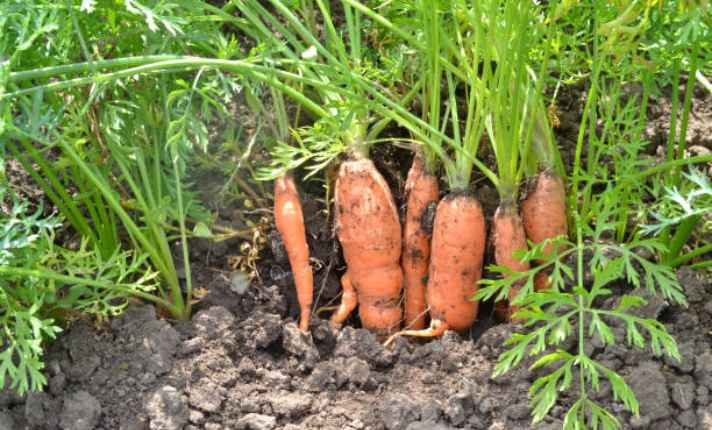
Carrots offer general benefits to neighboring plants by improving soil structure with their deep taproots, which help in enhancing soil aeration. They create pathways for water and nutrients to reach other plant roots.
2. Beets
When I planted arugula in my garden, I found that beets are great companions. Their roots grow underground and don’t compete for nutrients.
The leafy tops of beets provide shade, helping to retain soil moisture. Beets are called betterave in French.
They grow in a different space, improving the harvest in hot weather. However, avoid planting them near bush or pole beans. Beetroots are known for their earthy sweetness and nutrient-rich composition.

They thrive in fertile, well-drained soil with ample sunlight and a pH range of 6.0 to 7.0. Regular watering and loose soil are key for healthy root formation and vibrant foliage.
3. Cucumbers
Planting cucumbers with arugula is smart because cucumber leaves give shade during hot summer months, keeping delicate arugula leaves happy and healthy. Cucumbers thrive in various soil conditions, especially in well-drained loamy soil with compost.

They need consistent moisture and sunlight for strong vine growth and plenty of fruiting. Cucumbers also help neighboring plants by shading soil, conserving moisture, and attracting beneficial insects.
4. Borage
Growing borage with arugula in your garden is smart. Borage provides essential shade during hot summer months and acts as a natural flea beetle deterrent.
Its beautiful flowers attract beneficial insects, helping create a harmonious, thriving ecosystem.

Borage grows well in diverse habitats under the sun’s warm embrace. It is like well-drained soil with a neutral to alkaline pH and is very resilient and adaptable.
Ensure regular watering and adequate spacing for lush foliage and vibrant blooms, which also attract pollinators.
5. Beans
Growing bush beans and pole beans in your garden is great for your arugula. These beans add nitrogen to the soil, helping other plants grow strong.
They provide shade, which keeps arugula from bolting too soon. Beans love well-drained soil and lots of sunlight.

Their leguminous nature enriches the soil and makes a healthy garden. With botanical companions like beans, your harvest season will be full of greenery and bounty. They are true sustenance providers, adding vitality to your garden.
6. Celery
Celery is a great companion for arugula. Both like the same conditions and environment. Celery flourishes in well-drained, nutrient-rich soil with lots of organic matter.
It needs consistent moisture and sunlight to support its growth and vibrant foliage

Celery also helps the health of neighboring plants by improving soil structure, enhancing water retention, and fostering beneficial microbial activity.
Part of the Apiaceae family with parsley and carrots, celery adds vitality and elegance to any garden.
7. Nasturtiums
Nasturtiums are excellent companions for arugula as they thrive in various soil conditions, prefer full sunlight, and require consistent moisture.
They attract pollinators and beneficial insects like ladybugs and hoverflies, which help control pests.
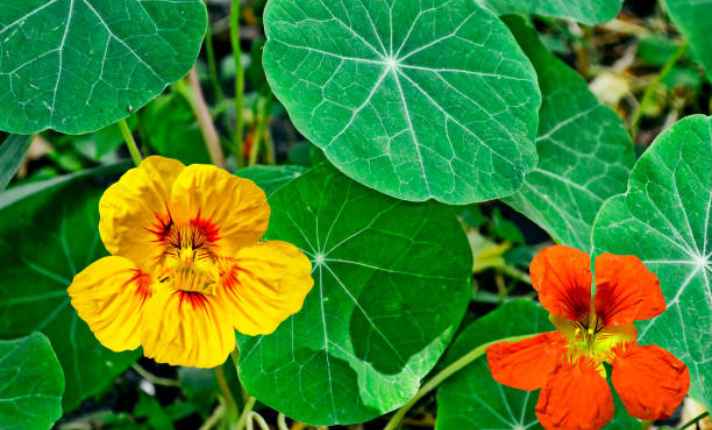
The peppery scent of nasturtiums repels aphids, protecting your arugula. Plant them a few feet away as a sacrificial crop to draw aphids away from your arugula.
Their low growth provides ground cover for beneficial spiders and beetles, enhancing garden protection.
8. Alliums
When I plant arugula in my garden, I always include onions, garlic, and chives. These allium vegetables are great companion plants. Their natural fragrance helps deter cabbage whiteflies and aphids from my greens.

I sow arugula between onions in the garden rows to keep the pests away. But remember, alliums don’t get along with beans. Plus, they add amazing flavor to my dishes!
9. Radishes
Radishes act like superheroes for arugula. They emit odors that pests find offensive, protecting arugula from enemies like aphids and cucumber beetles.
Their roots attract root maggots and wireworms, keeping them away from arugula.

Radishes also outcompete weeds, making the growing environment better for arugula. As a quick-to-grow companion, they attract pesty beetles away from arugula, reducing damage.
10. Lettuce
Lettuce is a great companion plant for arugula in cool weather. Its broad leaves provide shade, keeping arugula cool and preventing scorching in hot weather.
This shade also retains moisture in the soil, reducing water loss and regulating soil moisture to prevent stress.
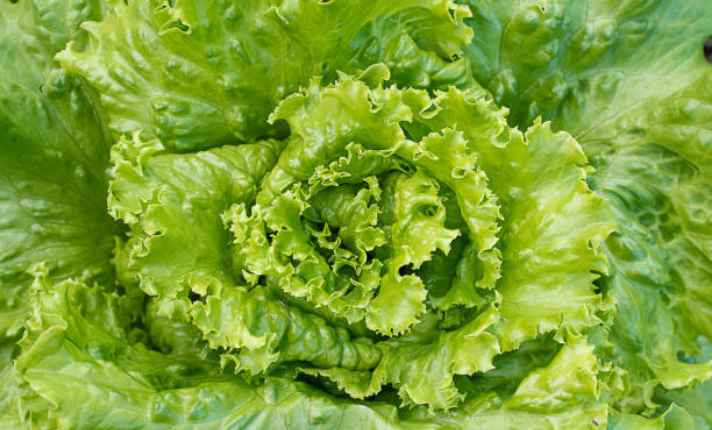
Lettuce comes in various colors and textures, making your garden visually appealing and flavorful. It has a shallow root system that keeps the soil aerated, improves structure, and enhances water retention.
Growing lettuce with arugula enhances your salads with their combined flavors and keeps arugula healthy.
11. Sunflowers
Sunflowers are great companion plants for arugula. These sunny, bright flowers attract beneficial insects like bees and ladybugs to your garden. Bees are excellent pollinators and ladybugs help control aphids without using pesticides.
Though sunflowers and rhubarb don’t go well together, sunflowers keep your arugula safe and healthy.
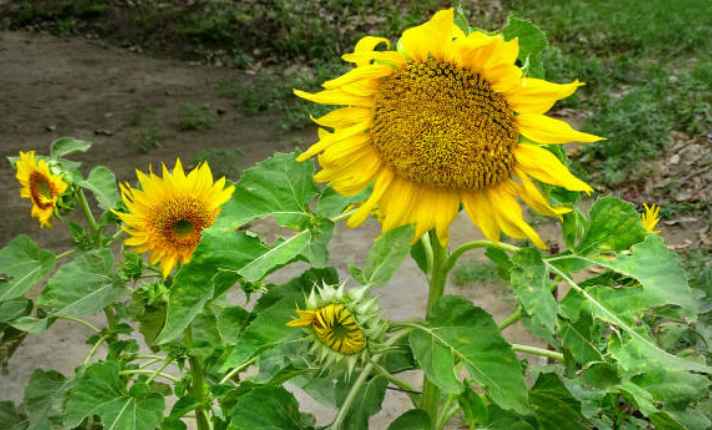
What Not to Plant With Arugula
Growing enemy plants near arugula can be a bad idea. These plants might bring detrimental insects that harm your arugula. They can also change the taste of the grown plant by consuming all the nutrients and water.
Because of these negative effects, I don’t recommend growing these plants next to arugula.
1. Eggplant
Eggplant loves well-drained, loamy soil and needs plenty of sunlight to grow. It thrives in fertile earth full of organic matter, showing its resilience and grandeur.
Make sure to give it enough moisture and proper spacing for robust growth and prolific fruiting.

Planting eggplant near arugula has many benefits. The eggplant helps by shading the soil, reducing weed growth, and promoting overall garden health for its neighboring plants.
2. Pepper
When planting arugula, peppers are great companions. They thrive in diverse soil conditions, especially in well-drained, loamy soil with a pH range of 6.0 to 7.0.
Sunlight and steady moisture help peppers grow strong with vibrant foliage and lots of fruiting.
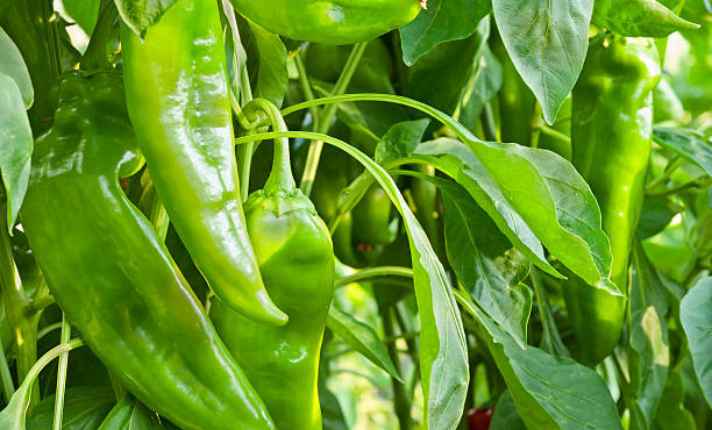
Peppers can help other plants by keeping away pests with their pungent compounds. They also attract helpful pollinators and add diversity to your garden landscape.
3. Tomato
When planting arugula, consider tomatoes as companions. Tomatoes thrive in fertile soil with the right pH, ample sunlight, and moisture. They attract pollinators, suppress weeds with their thick foliage, and enhance the garden’s richness.
In my garden, flourishing tomatoes improve the growth of neighboring plants and enhance the garden’s beauty.
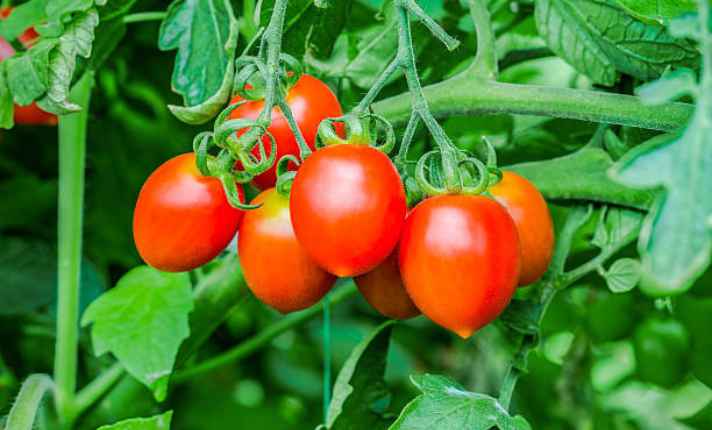
4. Potato
Planting potatoes near arugula helps the soil. Potatoes grow best in loose soil with a pH range of 5.0 to 7.0. They need full sunlight and consistent moisture to nurture their lush foliage and tuber development.
The invaluable benefits of potatoes include improving soil structure, suppressing weed growth, and adding nutrients as they decompose. Your neighboring plants will thrive too.
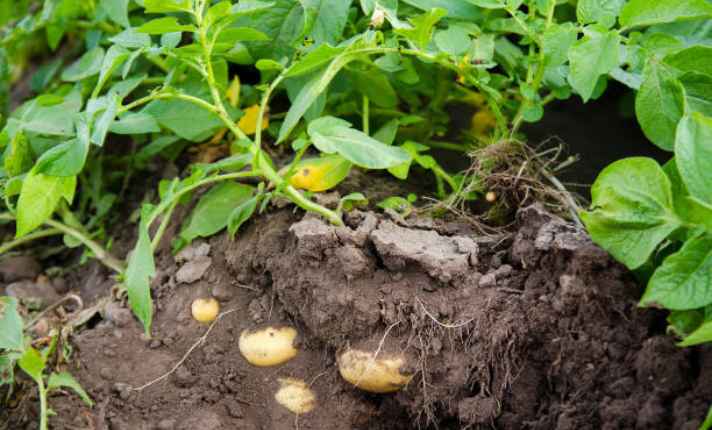
5. Strawberries
Strawberries can be a great ground cover but they are a poor companion plant for arugula. They have a spreading growth pattern that can take over the arugula. On hot days, arugula isn’t shaded and is likely to bolt.
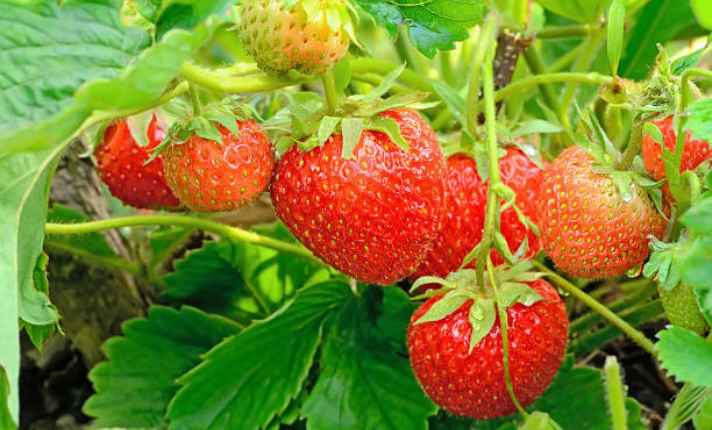
Tips for Sowing and Growing Arugula
Growing arugula can be a straightforward process if you understand the details. Arugula is known for its rapid growth, providing fresh leaves in a relatively short time.
Here are some tips to achieve the best results:
Sowing Arugula
- Start by sowing seeds directly outdoors in your garden.
- If you want a head start, you can also sow seeds in cold frames or hoop houses.
- For direct sowing, plant arugula seeds outdoors in spring as soon as the soil is workable.
- You can make additional plantings every three weeks while the cool weather lasts.
- For a winter harvest, sow seeds in mid-fall.
- Indoor starting is not recommended, but arugula performs well when sown directly into cold frames and high tunnels.
- Start seeds in the fall or early in the spring, and provide ample ventilation on warm days.
Growing Arugula
- Proper spacing is essential for arugula plants to develop well.
- In rows, leave about 1 inch (2.5 cm) between plants.
- When growing arugula in beds, aim for a spacing of 6 inches (15 cm).
- As the plants grow, thin them progressively to 6 inches (15 cm) for adequate space and healthy development.
- Arugula seeds typically germinate within 5-7 days, making it a satisfying choice for gardeners eager to see results.
- Arugula prefers cooler temperatures, with a growing soil temperature range of 50-65°F (10-18°C).
- It can tolerate light frost, making it an excellent choice for early spring and late fall planting.
FAQ’s
Q: What Does Arugula Like to Be Planted By?
A: Arugula is a vegetable that loves to grow in full sun and fertile, well-drained soil. To help it thrive, add compost or fertilizer to the soil. Water it when the soil gets dry.
This will help its green leaves stay healthy and strong. You will enjoy its distinctive, seasonal flavor as it grows alongside other herbs.
Q: Where Is the Best Place to Plant Arugula?
A: Arugula thrives in nutrient-rich and well-drained soil. It can tolerate different conditions, making it suitable for containers, raised beds, or traditional garden beds.
In my garden, raised beds with added compost made the arugula grow big and tasty. You can easily find a good spot for arugula, even in a small garden or a few containers.
Q: What Kind of Fertilizer for Arugula?
A: When I plant arugula, I know its initial growth spurt is crucial. Right after planting, I use a balanced fertilizer to set the stage for vigorous leaves. It’s important to use a balanced N-P-K ratio, like 10-10-10, but only at half-strength.
This way, I avoid overwhelming my young greens. The right fertilizer ensures the growth is strong and healthy.
Q: Does Arugula Like a Lot of Water?
A: Arugula is a tasty green that loves water. To keep it at its peak flavor, make sure your plants receive at least one to two inches of water per week.
If the rainfall in your area is low, you might need to hand water or use an irrigation system. Meeting its watering needs will help your arugula grow well.
Q: How Deep to Plant Arugula?
A: Plant arugula seeds ¼ inch deep and a few inches apart in rows. Alternatively, broadcast the seeds with other salad greens. You can also use transplants. Thin the plants to 10-12 inches apart and use the thinnings for early spring salads.
Conclusion
Growing arugula is easy with helpful companions. Choose plants like basil and dill to boost growth. Remember to avoid tomatoes as they can hinder arugula’s development.
Prepare your soil well and plant seeds correctly for better results. Combine arugula with other vegetables like lettuce or carrots for a diverse harvest. Don’t forget to save seeds for future plantings.
Start your arugula garden today for fresh salads from your backyard. Explore more topics to find gardening tips and ideas that can help your garden flourish!
